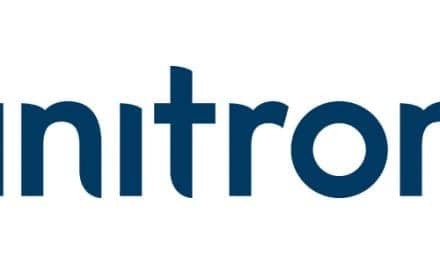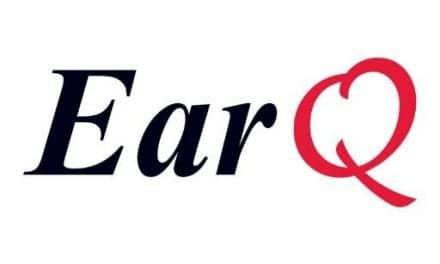Over the past decade, the entire hearing health care profession, particularly audiology, has grown to be recognized and respected by patients and government agencies. Steady progress has been experienced toward the doctorate level degree for practitioners. As AuD programs become more sophisticated and clinically demanding, it is hoped that new private practitioners in audiology will continue to emerge, gain the prerequisite experience and start their own practices.
One goal for hearing care practitioners in the new millennium should be to carve out professional niches as independent health care providers. In doing so, we need to utilize all the marketing ideas available in the year 2001. These new marketing strategies should help inform other health care professionals and prospective patients, and portray those involved in the hearing care field as progressive professionals in the private practice health care arena.
As baby boomers age, their demands to maintain good hearing will continue to challenge the hearing care profession to utilize the most sophisticated technology available. Technology continues to change rapidly and become more demanding. Care must be taken to maintain both the clinical and academic expertise to keep pace with this modern technology. Care should also be taken that this technology does not end up driving the profession; hearing care professionals should drive the technology.
In particular, the quest for more information and continuing education will be an exciting ongoing endeavor for audiologists and hearing care specialists in this new millennium. For audiology, the profession’s continual growth and knowledge at the doctoral level of pharmacology, neural physiology and the effects of sophisticated hearing instruments on rehabilitation is paramount. Additionally, dedicated aural rehabilitation programs for patients with hearing loss will establish the audiologist as a comprehensive hearing health care practitioner for the new millennium.
Professional Marketing in the New Millennium
Recognition of the effectiveness of hearing health care can only be obtained through professional marketing to patients and adjunct professions. The way we market ourselves and our services to the general public reflects on our professionalism. The hearing care field needs to find and utilize new marketing strategies which will be subtle—and more effective—in promoting the hearing health care profession.
Traditional newspaper advertising of hearing care services should continue on a more professional and educational basis. Advertising price in a newspaper ad should not be a standard for hearing care professionals. Instead, advertising should contain truthful and emotionally evocative statements that show patients how hearing loss effects people’s social, business and personal lives. At the same time, giving patients realistic expectations relative to the utilization of hearing instruments facilitates the patient’s journey to the most appropriate rehabilitation program.
Creative Media Opportunities
The old advertising messages featuring hearing instrument technology, price advertising and the technical aspects of hearing aids need to change. Additionally, more subtle, professional advertising which delivers an emotional message is available to us today. For example, our practice utilizes the telephone as a marketing tool. Various on-hold messages are designed to educate patients about the practice, the audiologists, what patients can expect from hearing instruments and our prescribed rehabilitation program. The on-hold messages are recorded on a continual digitized recording device that is activated each time a caller is put on hold.
| Current description | New description |
| Business | Practice |
| Factory | Laboratory |
| Sell | Prescribe/Dispense |
| Contract | Agreement |
| Discount/Trade In | Professional Courtesy |
| Customer | Client/Patient |
| Fishline | Extraction Line |
| Normal Hearing Loss | Expected Loss Due to Age |
In our practice, we have also found the use of prescription pads useful. In the past, our prescription pads were sent to physicians and utilized by them as a referral tool to our office. Similarly, the hearing care profession needs personalized prescription pads for hearing-impaired patients. These should include such things as referrals to primary care physicians, ENT’s, neurologists, etc. It can also be utilized to direct patients to obtain or purchase certain products (e.g., assistive devices) that will help during the clinical rehabilitation program. The prescription pad can serve as an order form for patients to undergo certain procedures within the practice or at another audiological center that offers specialized capabilities (e.g., full vestibular testing, etc.). It can also be used as an effective communication tool to physicians. By suggesting diagnostic examinations (e.g., update physical exam), we forward our recommendations in a universal and familiar manner.
With the new millennium, the Internet has become an important marketing platform for hearing health care. The excitement over the Internet and the “dot.com” approach to information about hearing instruments is both a blessing and a curse. When appropriately placed, the Internet can reach many more people than the traditional advertising methods. While most hearing care professionals would agree that fitting/prescribing hearing instruments over the Internet is not clinically appropriate, there is tremendous potential for the Internet to be used for obtaining referrals and educating potential clients on the benefits of hearing remediation.
However, hearing care professionals must take care that patients do not come away from their websites with erroneous information and a desire for a specific device which may not be the most appropriate technology for their hearing loss. When displaying instrument types, explanations about the limitations of these devices is warranted. Today, dot.com sites often serve as distribution centers where patients learn about different products from different laboratories and the technologies behind those products. The patients then approach the practitioner and demand this technology at a certain price as advertised online. We have a saying in our office: “The patient can never become the expert; the technology and rehabilitation program needed for their hearing loss is our expertise.” Of course we want the patient to understand the specifics about their particular hearing loss, what’s available in hearing instrument technology and why we recommend certain devices and rehabilitation programs, but it should always be the practitioner who prescribes the hearing instruments and rehabilitation program.
Disposable and Entry-Level Hearing Instruments
With the advent of the new disposable hearing instruments, another opportunity for growth (and confusion) presents itself in this year of the new millennium. In my opinion, the disposable hearing instrument should be utilized for patients who need to sample amplification for one or two months before making a decision, or as a loaner device or for nursing home and long-term care facility residents. Unless one provides (and consequently charges separately for) for the rehabilitative services, fitting disposable hearing instruments on a continual month-to-month basis as a permanent solution for patients appears to cause a potential dilemma relative to our commitment to aural rehabilitation.
Additionally, under the premise of the “one size fits most” hearing instrument, the use of disposable and certain entry-level hearing instruments may indicate a lack of appreciation of the anatomy and physiology of the inner ear and the topography of the ear canal itself. Presently, the public and some professionals may view disposable hearing aids as similar to disposable contact lenses. As a prostheses, hearing aids are more akin to dentures than to soft contact lenses. The shell of a hearing aid needs to fit precisely, because it is less compliant as compared to a soft contact lens. Hearing care professionals should continue to follow the development of the disposable hearing aid and utilize it as they see appropriate. However, to think that disposable and entry-level instruments can become the mainstay of a practice is, in my opinion, premature at this time.
The Vocabulary of Hearing Care Professionals
As hearing science advances and we become more prescriptive in recommending hearing instruments for patients, the use of the word “try” in the same breath with hearing instruments will diminish. Return rates of hearing aids traditionally escalate as practitioners suggest trial programs for patients. A prescriptive approach including the hearing aid, its specifications and the accompanied rehabilitation program demonstrates to patients confidence, professionalism and knowledge of what is needed to help them hear better. Trying hearing instruments begs the return of the instruments, since complete hearing was not restored and complete satisfaction was not obtained.
The satisfaction with hearing instruments is accomplished through a reasonable understanding by the patient of what hearing instruments can and cannot do. Hearing care professionals can help patients hear better over time. We can teach patients how to utilize hearing instruments and amplification technology more appropriately in background noise. These expectations are easy to explain to patients.
Therefore, the terminology we use in prescribing hearing instruments and rehabilitation programs is critical. The list of words used in the 20th century may be substituted for other more appropriate words in the new millennium. Accordingly, our profession should substitute the following words:
As the millennium has changed, so has the hearing care profession. As the profession has changed, and continues to change, so should the vocabulary and professionalism of its practitioners.
Edward L. Aleo, PhD, has over 25 years of experience as a dispensing audiologist and is owner of Audiology & Hearing Aid Services in Kingston, NY. Correspondence can be addressed to HR or Ed Aleo, 206 Henry St., Kingston, NY 12401-4844.




